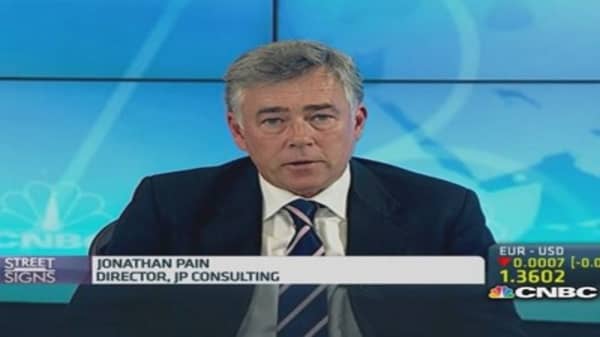After a number of false starts in recent years, it seems that India Prime Minister Narendra Modi's landslide election victory and a strong mandate have finally opened the way to a broad strategic partnership between Beijing and New Delhi.
Closer economic and political ties with China have been an important part of Mr. Modi's election program. He wants India to catch up and compete with China and, in order to do that, he advocates the need for "skills, scope and speed."
So far, he seems to have got the speed right. China and India have quickly moved to establish wide-ranging consultations on bilateral issues. China's Prime Minister Li Keqiang was the first foreign leader to place a congratulatory call after Mr. Modi's election, expressing Beijing's desire to set up a "robust partnership" with India. The Chinese Foreign Minister Wang Yi followed with a visit to Delhi, and India's Vice President Hamid Ansari made a five-day trip to China where memoranda were signed about Chinese companies' plans to build industrial parks in India.
Read MoreIs China set up for a 'perfect storm' in 2016?
The China-India summit meeting in Fortaleza, Brazil, on July 14, 2014 (on the eve of BRIC's two-day meeting) is the first in a number of forthcoming summits scheduled for this year. According to Indian media, that first encounter has been quite successful; it lasted 80 minutes – double the originally allotted time – prompting the Indian leader to tweet that he "had a very fruitful meeting with Chinese President Mr. Xi Jinping. We discussed a wide range of issues."
The sensitive border and trade problems topped the agenda. And in a new sign that the two countries are really moving closer, Mr. Xi invited Mr. Modi to attend the summit of APEC nations (of which India is not a member) next November in China, and to step up the participation in the Shanghai Cooperation Organization (SCO), where India currently has the observer status.
Read MoreChinese brides give diamond market sparkle
Beijing's invitation for India's deeper engagement with the SCO is of particular importance. That is an old idea strongly advocated by Russia (the SCO's founding member) but, so far, systematically blocked by China. If, as seems likely, India does become the new SCO member during the organization's next summit in Ufa, Russia, in July 2015 that would indeed take its relationship with China to the level of strategic partnership.
Border problems and trade imbalances
Serious difficulties in attempting to find a mutually acceptable settlement for a 2520 miles (4056 km) frontier has been a major stumbling block between the two countries ever since India's independence in 1947. Technical discussions have been going on for decades. They will continue. The difference is that these discussions are now coupled with the leaders' firm pledge to find a peaceful solution.
Read MoreFive reasons why India's rebound is real
More important, perhaps, is the agreement not to allow the border issue to stand in the way of closer economic and political ties. These are seen as confidence building measures that should facilitate difficult territorial compromises.
Trade imbalances are also a serious problem. The bilateral trade last year came in at $65.47 billion, with India's trade deficit amounting to $31.42 billion. A similar outcome is likely this year. According to China's customs data, the trade volume in the first four months is running at an annual rate of $66 billion, and the Indian trade gap is narrowing to about $20 billion.
Delhi and Beijing agree that this trade imbalance is "unsustainable." Solutions are sought in greater Chinese direct investments in India, exports of India's services (mainly tourism) and a more liberal access of Indian pharmaceutical companies to China's market.
Read MoreTime to pick up 'dirt cheap' China property stocks?
In the course of Fortaleza summit, Mr. Xi suggested infrastructure investments in modernizing India's railroads and roads. Chinese companies are already working on industrial parks in several locations.
Interestingly, a number of Indian states have been actively promoting their building sites and conditions to Chinese investors. That is a huge change compared with often indifferent or even hostile attitude of Indian local authorities toward foreign direct investments in the past. This could be an early sign of Mr. Modi's hands-on management style. He was the chief minister of the state of Gujarat for 12 years. During that time, Gujarat's economy grew at an average annual rate of about 10 percent, partly because it actively and successfully courted direct investments.
Stabilizing the economy
India has also some work to do to balance the economy. The projected central government's budget deficit of 4.1 percent of gross domestic product (GDP) for the current fiscal year will probably lead to some decline of the consolidated public sector deficit, which averaged 7.3 percent of GDP over the last three years. That would leave more domestic savings to finance productive investments; it would also decrease India's dependence on foreign fund inflows to support current consumption and business capital outlays.





